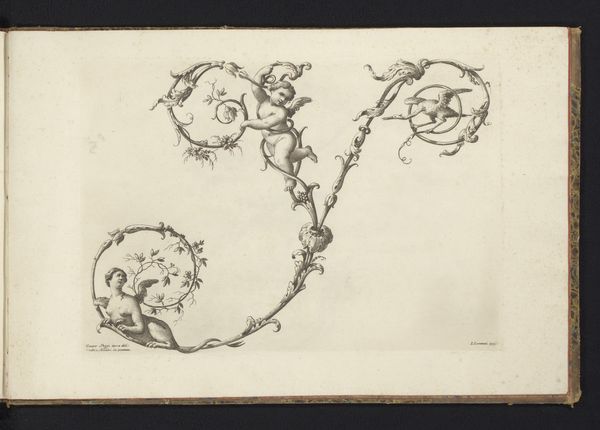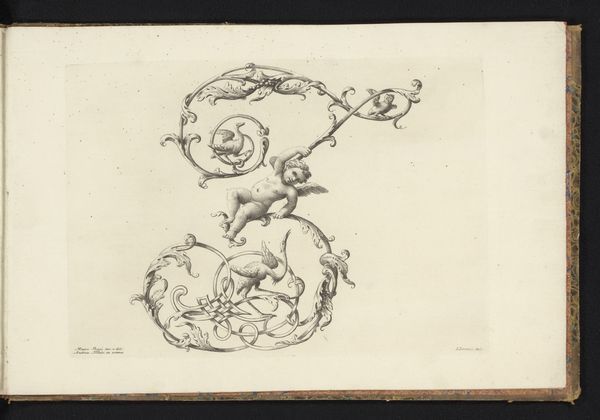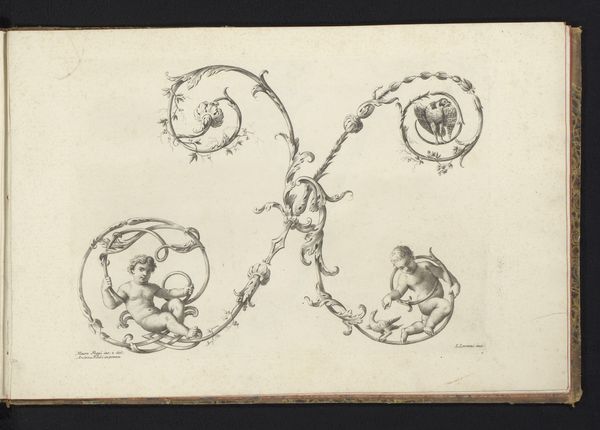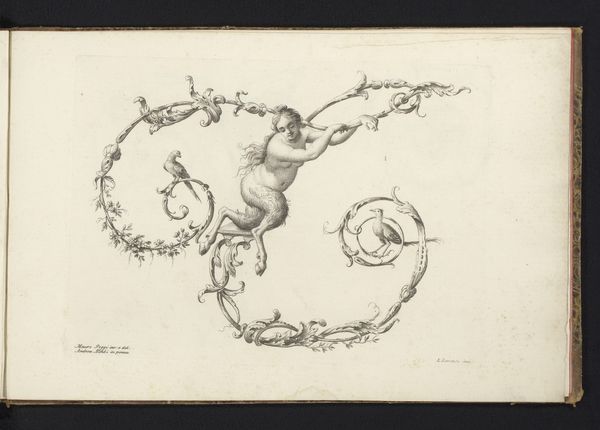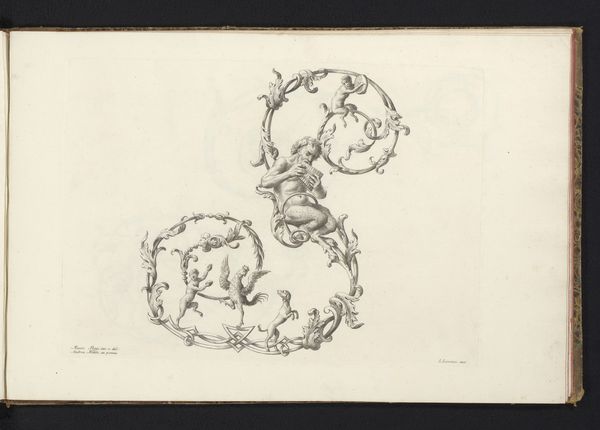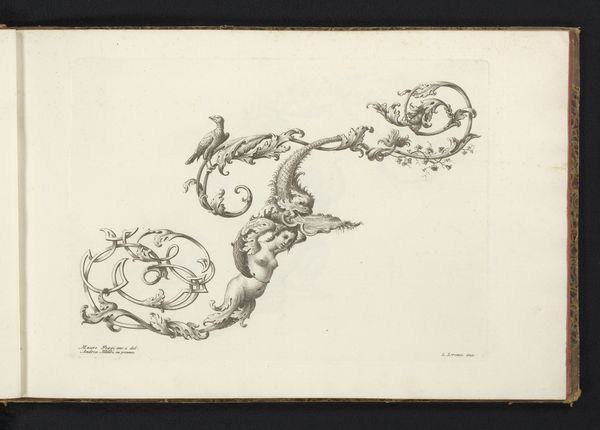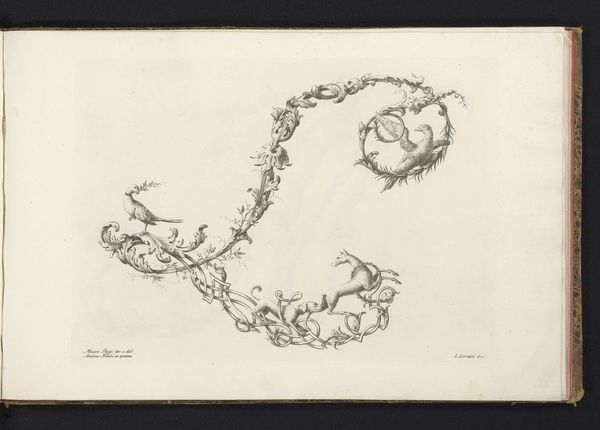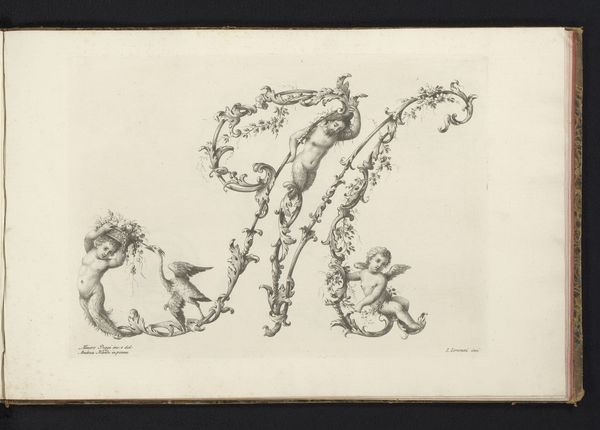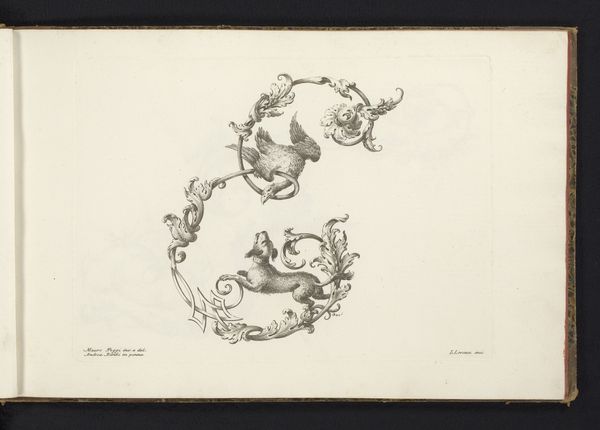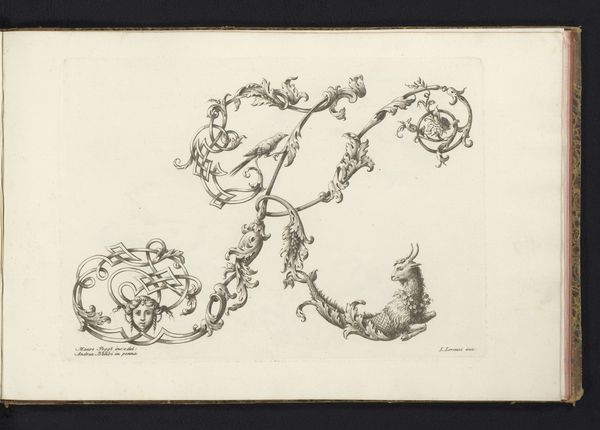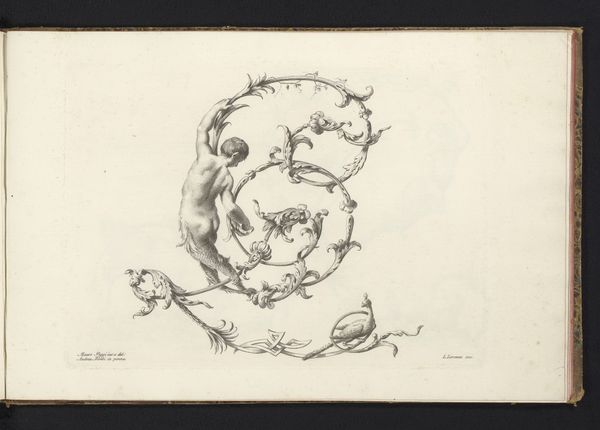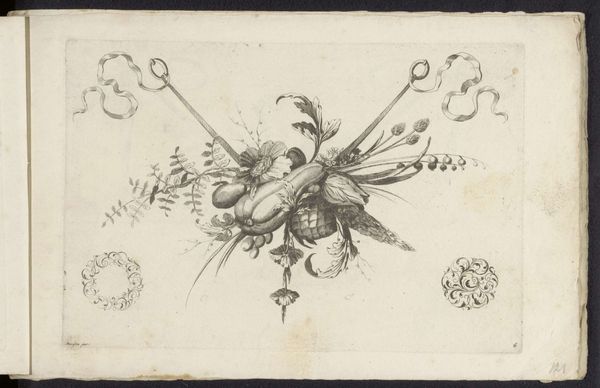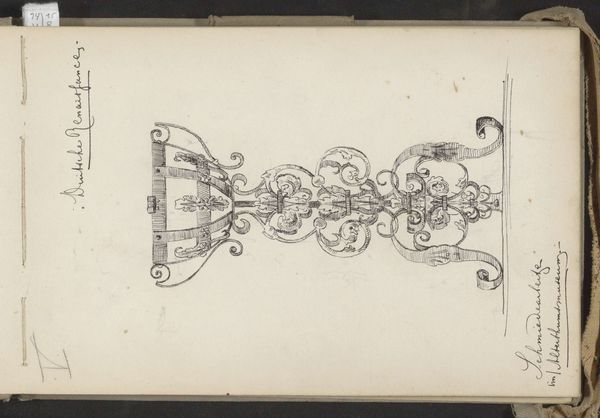
drawing, ink, pen
#
drawing
#
baroque
#
pen drawing
#
figuration
#
ink
#
pen
#
nude
Dimensions: height 226 mm, width 312 mm
Copyright: Rijks Museum: Open Domain
This ornamental letter 'T' was made by Lorenzo Lorenzi in the 18th century. Note the putti intertwined with foliage, their playful gestures animating the static form of the letter. The putto, a cherubic figure, isn't unique to the 18th century. These figures, derived from classical antiquity, have a rich, layered history. In Roman art, similar winged figures, often associated with Venus and Cupid, symbolized love and desire. These pagan motifs were later adopted and transformed by Christianity, where putti came to represent heavenly love and divine messengers. But even within Christianity, the putto's meaning evolved. In the Renaissance, they often signified spiritual awakening and intellectual enlightenment, reflecting the era's renewed interest in classical learning. In Lorenzi's design, these figures, seemingly suspended in mid-air, create a visual tension, hinting at the eternal dance between earthly desires and spiritual aspirations. It’s a captivating reminder of how symbols transcend time, continuously adapting and reflecting our deepest collective memories and anxieties.
Comments
No comments
Be the first to comment and join the conversation on the ultimate creative platform.
